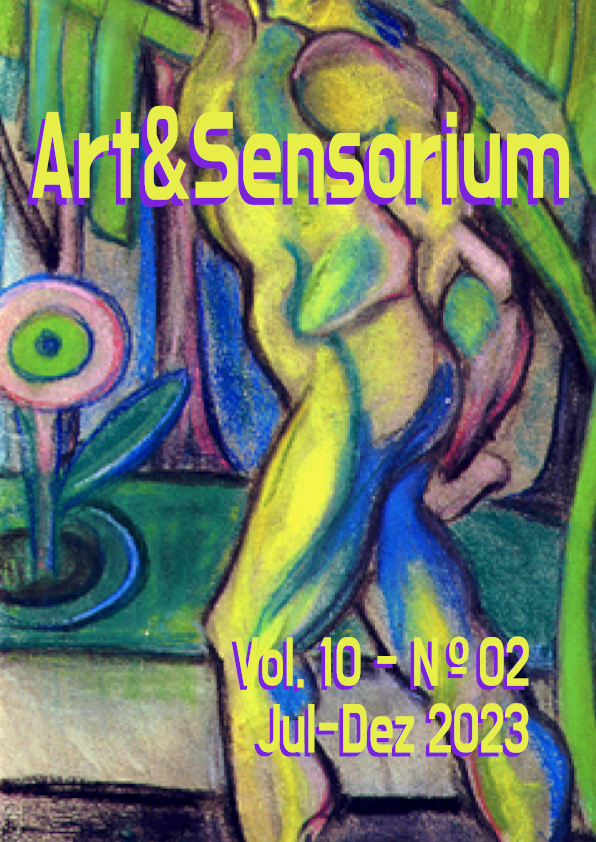Hermeneutic identity and denotation-connotation in postmodern artistic practices
DOI:
https://doi.org/10.33871/23580437.2023.10.2.84-102Abstract
The essay proposes a theoretical discussion, which starts from the problem of how to rethink aesthetic, hermeneutic and semiotic concepts such as the unity of the work of art, hermeneutic identity and denotation-connotation, from a perspective focused on the process of artistic reception; especially in the case of works that lack a stable structure well differentiated by precise limits. Consequently, the objective is to analyze the operability of these concepts from the perspective of reception, projecting them onto the semiotic specificity of postmodern artistic practices. To this end, in the introduction this non-generic category is briefly defined, and its methodological relevance is argued as opposed to the vague narrowness that characterizes the notion of the use of “visual arts”. The theoretical exposition is divided into two sections. The first deals with the notions of hermeneutic identity and unity of the work of art, based on Gadamer's hermeneutics. In the second section, the problem of denotation and connotation in postmodern artistic practices is analyzed from a semiotic perspective. It is concluded that the hermeneutic identity of a work is produced by the understanding that the receivers make of it, which is much more evident in those artistic practices before which the receiver is forced to articulate, at a purely mental level, his own projection of denoted and connoted meanings, to understand the work.
Downloads
Downloads
Published
Issue
Section
License
Copyright (c) 2023 International Interdisciplinary Journal of Visual Arts - Art&Sensorium

This work is licensed under a Creative Commons Attribution 3.0 Unported License.
Authors who publish with this journal agree to the following terms:- Authors retain copyright and grant the journal right of first publication with the work simultaneously licensed under a Creative Commons Attribution License that allows others to share the work with an acknowledgement of the work's authorship and initial publication in this journal.
- Authors are able to enter into separate, additional contractual arrangements for the non-exclusive distribution of the journal's published version of the work (e.g., post it to an institutional repository or publish it in a book), with an acknowledgement of its initial publication in this journal.
- Authors are permitted and encouraged to post their work online (e.g., in institutional repositories or on their website) prior to and during the submission process, as it can lead to productive exchanges, as well as earlier and greater citation of published work (See The Effect of Open Access).


